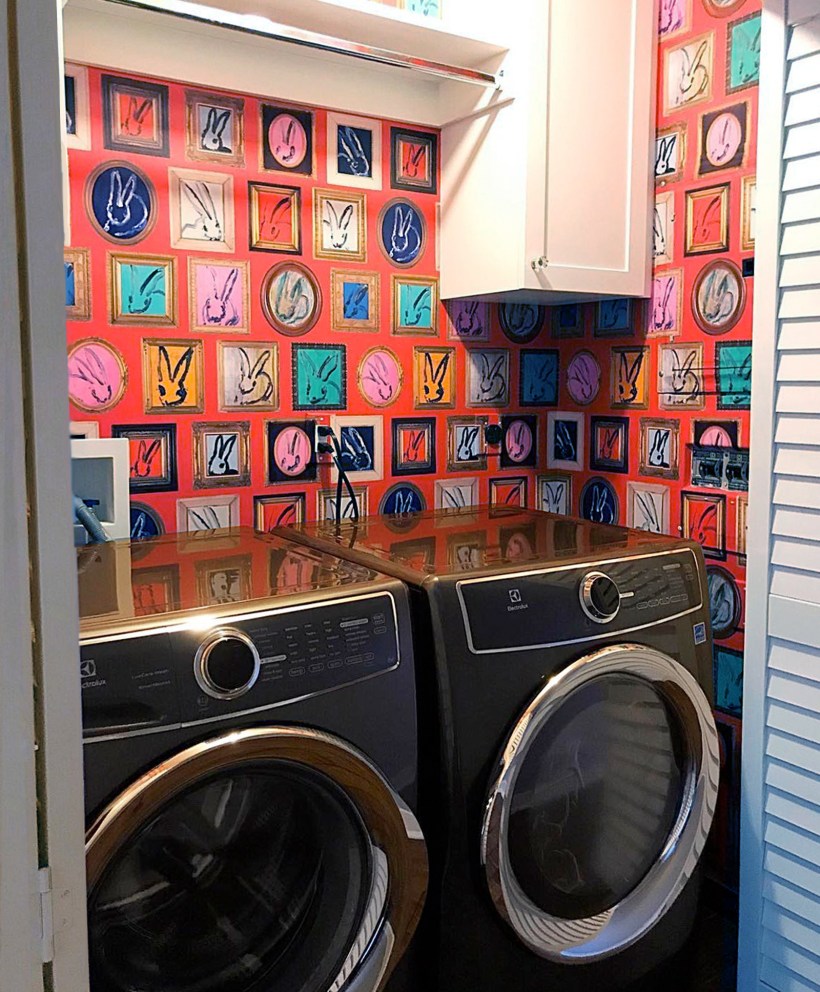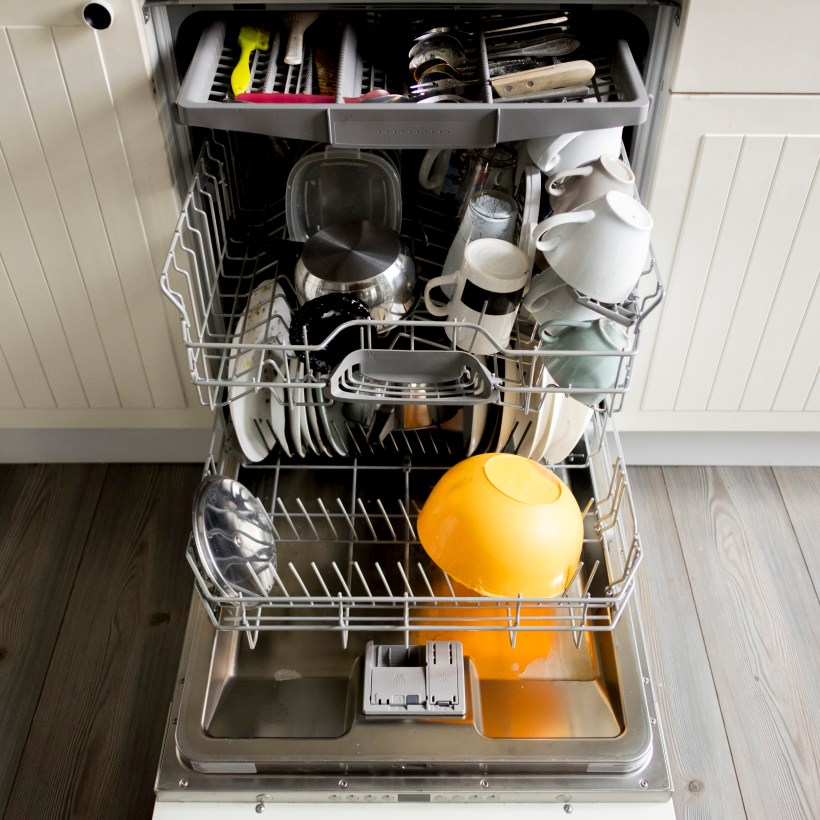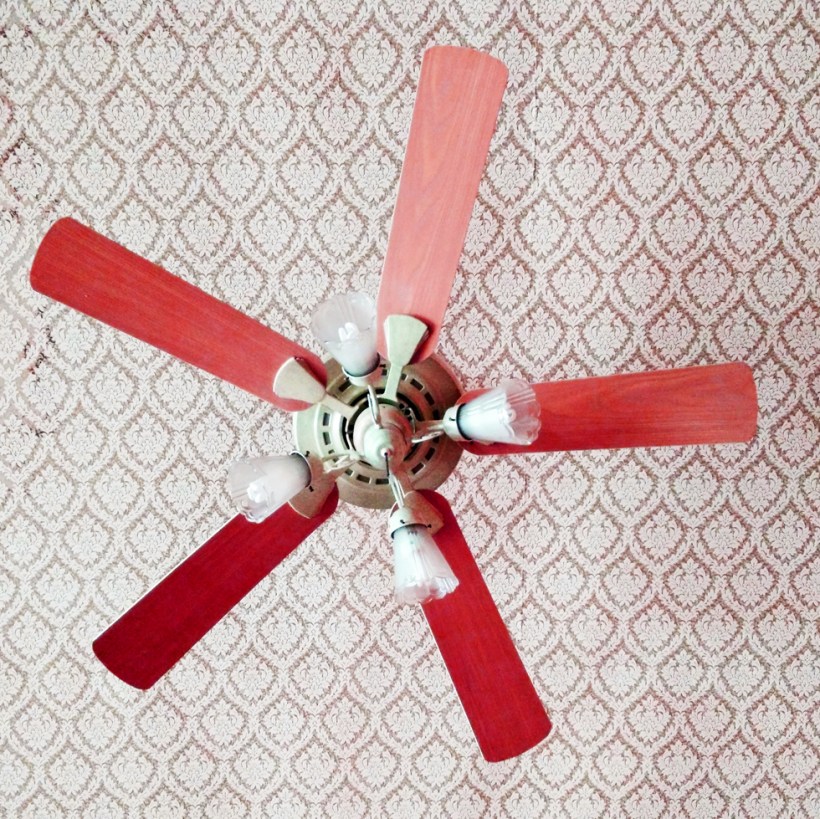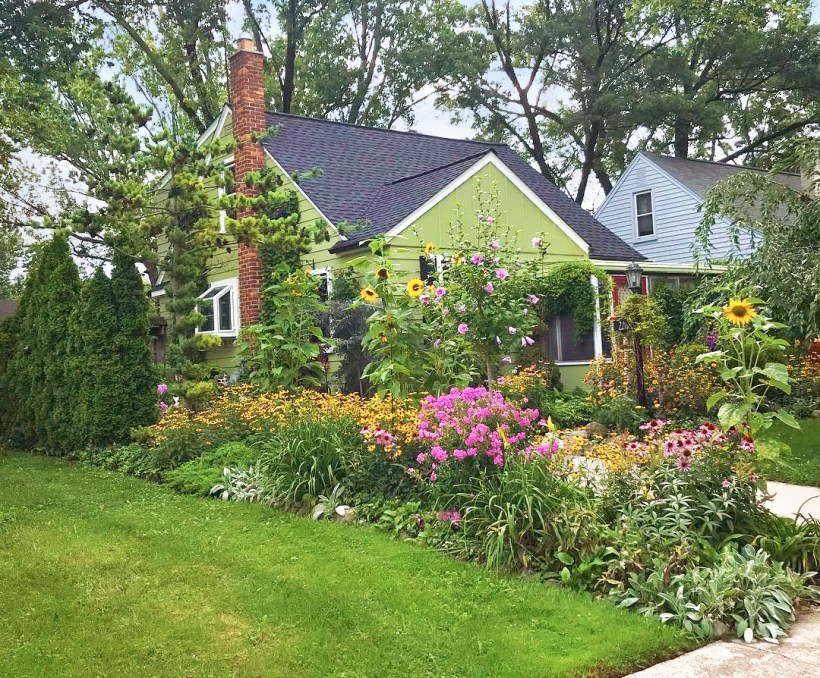Your house gives you so much: security, pride, shelter. With all that on the line, it's easy to assume the costs of keeping it up just are what they are. But wait. There are plenty of expenses that are simply a waste.
35 Easy Ways to Save Money Around the House
Small changes can start to add up. Here are ways to save money each month without putting a dime of home value at risk.
#1 Clean Your Lightbulbs
What? Who does that? Well, smart people (those who know shrewd, easy ways to save money). A dirty bulb emits 30% less light than a clean one. Dust off both the bulb and fixture, and you might be able to cut back on the number or brightness of lights in each room without noticing any difference.
#2 Keep Your Fridge Full
Solid items snuggled together retain the cold better than air and help keep one another cold — requiring less energy overall. Leaving town for awhile and fridge is empty? Fill voids in the fridge or freezer with water bottles.
#3 Use Power Strips
Here is an easy way to save money — a lot of it — on bills. Appliances like coffee makers, TVs, and computers continue to suck power even when they're off, which can add 20% to your monthly utility bill and increase the average household's annual electric bill by $100 to $200. And did you know the AC adapter for your laptop keeps drawing power even if the laptop isn't plugged in? Stop this slow money burn by connecting them to an easy-to-switch-off power strip.
#4 Use a Toaster Oven When Possible
Toaster ovens use roughly one-third the electricity used by a full-size electric oven.
#5 Set Your Water Heater to 120 Degrees
Hot water heaters often come with a factory setting that's higher than you need. You'll cool your water heating costs by 3% to 5% every time you lower the temperature setting by 10 degrees.
#6 Insulate Your Water Heater
For about $30, an insulating jacket or blanket can shave 7% to 16% off your water heating costs for the year. Just make sure to follow the manufacturer's directions to avoid creating a fire hazard.
#7 Wash Clothes in Cold Water

Just switching from hot to warm water will cut every load's energy use in half, and you'll reap even more savings taking the temp down to cold. And don't worry: Your clothes will get just as clean from cold water, thanks to the efficiency of today's detergents (except in the case of sickness, when you'll want hot water and bleach).
#8 Use the Right Dryer Cycle
If you're using a high heat setting for each load, you could be using more energy than you need. Almost all fabrics can be dried with a lower heat setting, such as the permanent press setting. It uses less energy and has the bonus of extending the life of your fabrics. Save the higher heat for items such as sheets and towels.
#9 Use Homemade Cleaners
Many commercial products rely on baking soda or vinegar for their cleaning power, so why not make your own? Odds are, you likely have a lot of the ingredients sitting in your cabinets or pantry right now.
#10 Cut Back on Laundry Detergent
Never mind the barely visible measurement lines in the cap: You typically need only a tablespoon of detergent. And, clothes actually get cleaner when you use less, because there's no soap residue left behind.
#11 Ditch Disposable Sweeper and Mop Head
Stop throwing money away every time you clean! Refill your Swiffer Sweeper with microfiber cloths. Just cut to size and use them dry for dusting or with a little water and floor cleaner for mopping. Or switch to a microfiber mop with a washable head.
#12 Stop Buying Dryer Sheets
Another easy money saving swap? Give up your dryer-sheet habit (about $10 for 240 loads) in favor of wool dryer balls (about $11 for four, which can last for up to 1,000 loads each). Of course, depending on your laundry preferences, you can always just go without either.
#13 Cut Scouring Pads in Half
Most clean-ups don't require a full one.
#14 Don't Rinse Dishes

Two minutes of rinsing with the faucet on full-power will consume five gallons of water — the same amount efficient dishwashers use during an entire cycle. Shocking, right? And it's an unnecessary step, since most newer models are equipped to remove even stubborn food debris. Just be sure to clean the dishwasher trap regularly to keep your dishwasher running efficiently.
#15 Keep a Pitcher of Water in the Fridge
You won't have to waste time and money running the faucet, waiting for it to get cold enough for a refreshing sip.
#16 Set a Timer for the Shower
The average American takes an eight-minute shower and uses about 16 gallons of water. It's easy to linger, so set a timer for five minutes. Or try this more entertaining idea: Time your shower to a song or podcast segment.
#17 Install Low-Flow Fixtures
By installing a just one low-flow showerhead, the average U.S. household can save about 2,700 gallons of water every year and decrease home water consumption by 40% or more.
#18 Replace Your Old Water-Hogging Toilet
The U.S. Environmental Protection Agency says that by replacing old, inefficient toilets with WaterSense-labeled models, the average family can reduce water used for toilets by 20% to 60% — nearly 13,000 gallons of water savings per year. (WaterSense-labeled toilets are independently certified to meet criteria for both performance and efficiency, according to the EPA.) They could also save more than $140 per year in water costs.
#19 Close Closet Doors
Each closet and pantry may hold a paltry amount of square footage, but you're still heating and cooling it. Add up all the storage space, and you've got the equivalent of a small room. Shut the doors to keep the conditioned air out.
#20 Program the Thermostat
You can save as much as 10% a year on heating and cooling by simply turning your thermostat back seven degrees to 10 degrees Fahrenheit from its normal setting for eight hours a day. You can easily save energy in the winter by setting the thermostat to around 68 degrees while you're awake and setting it lower while you're asleep.
#21 Don't Crank the Thermostat Up or Down Too Far
A common misconception is that a furnace works harder than normal to warm a space back to a comfortable temperature after the thermostat has been set back, resulting in little or no savings, says Energy.gov. In fact, as soon as your house drops below its normal temperature, it will lose energy to the surrounding environment more slowly. Avoid setting your thermostat at a colder setting than normal when you turn on your air conditioner. It won't cool your home any faster and could result in excessive cooling and unnecessary expense.
#22 Use Fans Year-Round

Ceiling fans can reduce your summer cooling costs and even reduce winter heating bills — but only if used correctly. Flip the switch on the base to make the blades rotate counterclockwise for a cooling effect or clockwise to help distribute heat in the winter. And in the warmer months, an attic or whole-house fan can suck hot air out and help distribute cooler air so you can give the AC a little break.
#23 Caulk or Weatherstrip Around Doors and Windows
Caulk may not have the charisma of something like solar panels, but using it to seal air leaks around doors and windows will deliver immediate savings. You'll spend $3 to $30 and save 10% to 20% on energy bills.
For gaps between moving parts that can't be caulked, add weatherstripping.
#24 Add Insulation
By sealing air leaks and installing the right insulation in places like attics, crawl spaces, and basements, homeowners can save an average of 10% on heating and cooling.
#25 Change HVAC Filters
Nearly half of the energy used in your home goes to heating and cooling, according to Energy Star. That's why it's important to check your home's HVAC filter and change it about every three months or more often if it looks grungy because of heavy use in the summer or winter. A dirty filter obstructs air flow, so the system has to work harder and wastes energy.
#26 Plant Shade Trees

Block the summer sun to lower cooling costs. Planting one shade tree on the west side and one on the east side of your home can shield your home from the sun during the summer months (but avoid south-side trees, which block winter sun). Carefully positioned trees can save up to 25% of the energy a typical household uses, according to Energy.gov. Plus, healthy, mature trees add an average 10% to a property’s value, says the Arbor Day Foundation.
#27 Use Curtains as Insulation
Another way to practice energy-saving passive heating and cooling? Open curtains on sunny windows in the winter and close them in the summer.
#28 Cool With a Cross Breeze
On a breezy day, open a window on the side of your house that's receiving the breeze, then open another on the opposite side of the house. Make sure the window on the receiving side is open a little less than the exhaust side to accelerate the breeze. You can also use a fan if there's no breeze outside.
#29 Check Your Mortgage PMI
You’ll generally pay between $30 and $70 per month for every $100,000 borrowed, according to Freddie Mac. Keep in mind this amount can vary based on your credit score and your loan-to-value ratio — the amount you borrowed on your mortgage compared to the home’s value.
once you've built 20% equity in your home, you can ask your lender to cancel your PMI and remove that expense from your monthly payment. If the value of your home appreciates before then, you might be able to cancel sooner.
#30 Check Your Home Insurance for Savings
Your homeowners insurance should change as your life changes. Installing home security devices — including smoke detectors, burglar and fire alarm systems or dead-bolt locks — could reduce your premiums, says the Insurance Information Institute.
Bundling your home and auto coverage could also save money on both policies. To be sure you're getting the best price, check that any combined price from one insurer is lower than buying the coverage separately from different companies, according to the III.
A "Consumer Reports" survey found that of the 21% of consumers who had changed home insurance carriers in the past five years, 62% were motivated by better rates or because their current carrier had raised rates. So, you could save by going with a new company.
#31 Borrow Tools Instead of Buying
How often are you going to use that expensive demolition hammer once you remove your bathroom tile? Not so much? Rent it from a home-improvement store for a fraction of the cost. Be sure to do the math for each tool and project, though. Sometimes the rental price is high enough to justify buying it.
Or join a tool lending library or cooperative to borrow tools for free or much less than retail stores.
#32 Cut Back on Paper Towels
Households average about $115 per year, or $2.20 per week, on paper towels. Over 10 years that’s $1,150. Instead, try machine-washable cotton shop towels. They clean up messes just as fast and cost a few dollars for five. Save paper towels for messes that need to go straight into the trash, like oil and grease.
#33 Stop Buying Plants for Curb Appeal Every Year

A pop of color in your landscaping perks up your curb appeal. But instead of wasting household funds on short-lived annuals, invest in perennials that will keep giving for years to come.
#34 Water Grass in the Morning to Save on Your Water Bill
Turning the sprinkler on at midday is kinda like watering the air — especially when the mercury soars. Lose less to evaporation by watering during cooler hours (but avoid overnight watering, when too-slow evaporation can invite fungus growth).
#35 Make Your Yard Drought-Tolerant
According to the Environmental Protection Agency, a traditional lawn can use up to 10,000 gallons of water per year, while a xeriscape yard can use as little as 2,500 gallons of water per year, according to the Environmental Protection Agency. This can result in a savings of 7,500 gallons of water per year.
